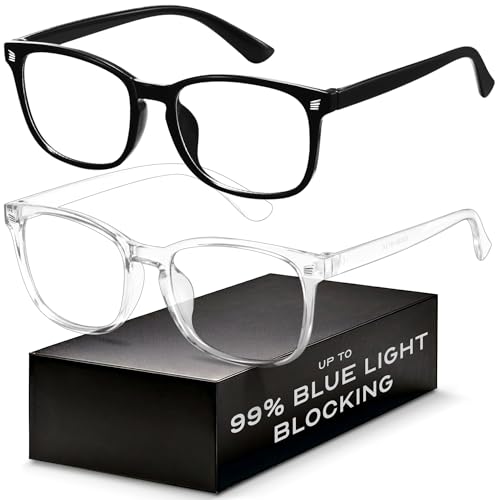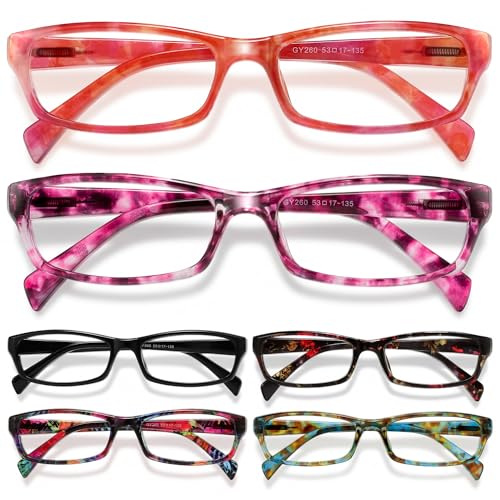I spend a lot of time staring at screens—my phone laptop and TV are almost always within reach. It’s hard to imagine a day without them but lately I’ve noticed my eyes feeling dry and tired more often than not. I started wondering if all that screen time could be to blame.
Turns out there’s more to it than just not blinking enough. Blue light from digital screens might be playing a bigger role in dry eyes than I thought. If you’ve ever rubbed your eyes after a long day online you’re definitely not alone. Let’s take a closer look at how blue light could be drying out our eyes and what we can do about it.
Understanding Blue Light Exposure
Blue light exposure affects the way our eyes function during everyday activities involving digital devices. I notice most blue light comes from screens on smartphones, tablets, computers, and LED lighting. My observations show blue light falls in the 400–490 nanometer range, where shorter wavelengths mean higher energy output.
Screen brightness, proximity, and usage duration raise the amount of blue light my eyes take in. I find prolonged screen use, such as several hours of uninterrupted work or gaming, results in increased blue light delivery to my eyes. Studies, including one published in Ophthalmic & Physiological Optics (2018), confirm that screen-based tasks are the main source of blue light exposure for adults today.
I see that digital screens emit more high-energy visible blue light than natural sources like sunlight when considering indoor use patterns. People working under LED lighting or using multiple digital devices at once can absorb even more blue light throughout the day. My own research connects consistent, high-level blue light exposure with disruptions in natural blink rates, which, for example, commonly drops from 15 blinks per minute to under 7 blinks per minute during intense screen time.
Awareness of how blue light surrounds me indoors shapes my approach to protecting my eye health. I focus on educating others about identifying sources of blue light, quantifying their daily exposure, and understanding how cumulative use affects overall eye comfort and hydration.
What Are Dry Eyes?
Dry eyes describe a condition where the eyes produce insufficient tears or the tears evaporate too quickly. I notice this most when the surface of my eyes feels gritty, stings, or burns, especially after long screen sessions. Common symptoms include redness, blurry vision, sensitivity to light, and a persistent urge to rub the eyes—I’ve experienced all these after staring at monitors for hours.
Tears keep the eye surface smooth and clear. In dry eye cases, the natural tear film destabilizes, worsening discomfort over time. When I blink less during screen use, as measured in studies published by Investigative Ophthalmology & Visual Science (2014), my tear film evaporates faster, leaving the eyes dry and fatigued.
Multiple factors trigger dry eyes, with digital device use, aging, certain medications, and environmental conditions (such as low humidity) among the most common causes. In my research on blue light, I link prolonged screen time directly to an increased risk of developing or worsening dryness, further reinforcing the importance of awareness around tear film health and blue light exposure.
The Science Behind Blue Light and Eye Health
Blue light interacts with the eyes in distinct ways compared to other visible light. I focus my attention on exactly how blue light affects the ocular surface and why digital devices contribute so much to modern blue light exposure.
How Blue Light Affects the Eye Surface
Blue light impacts the eye surface mainly by increasing oxidative stress in the corneal and conjunctival cells. Studies, like those published in Free Radical Biology and Medicine (2019), report that blue light wavelengths between 415–455 nanometers can trigger reactive oxygen species generation in these cells. I see this oxidative stress destabilizing the tear film, leading to increased evaporation and the classic symptoms of eye dryness, such as grittiness, stinging, and fluctuating vision. Shorter wavelengths also penetrate more deeply into the eye’s anterior tissues, compounding inflammation and irritation if exposure is frequent or prolonged.
Digital Devices and Increased Blue Light Exposure
Digital devices contribute the highest rates of blue light exposure in people’s daily routines. Monitors, smartphones, tablets, and modern LED lighting use backlights emitting blue light at intensities much higher than traditional incandescent bulbs. I found that most LED screens peak in the 440–470 nanometer range, which aligns precisely with the range most likely to cause eye surface changes. Usage patterns also matter: the average American adult spends over 7 hours per day on digital screens according to Nielsen’s Total Audience Report (2023), which amplifies cumulative blue light intake. Indoor device use concentrates blue light directly into the eyes, especially during close-up work, reducing blink rates and amplifying the risk of tear film disruption and dryness.
Symptoms and Signs of Dry Eyes Linked to Blue Light
Several consistent dry eye symptoms stand out after prolonged blue light exposure. I often notice stinging, burning, or scratchy sensations—these usually develop when my screen time extends beyond 2 hours without breaks. Redness appears in the whites of the eyes, making them look irritated—studies in Contact Lens & Anterior Eye (2020) found that screen users reported increased redness after 4 hours.
Fluctuating blurry vision typically worsens throughout the day, often improving once I take lengthy breaks from devices. Sensitivity to light, especially indoor LED or screen glare, feels more pronounced after I’ve used multiple devices back to back. Watery eyes occur paradoxically—the eyes try to compensate for dryness by overproducing reflex tears, though these lack the necessary oils for stable relief.
Eye fatigue and heaviness set in during high-focus tasks involving sustained close-up viewing, like coding or reading small text. I also experience frequent blinking and even excessive blinking, as my eyes instinctively attempt to maintain tear film coverage.
More individuals develop these specific dry eye symptoms when device use increases—research in the International Journal of Ophthalmology (2021) documented significant symptom escalation in adults who used digital screens at least 6 hours daily. I observe that blue light…
- Reduces blink rate
- Triggers inflammatory responses
- Destabilizes natural tear film
- Intensifies eye fatigue and discomfort
Recognizing these signs is crucial if users want to identify and manage blue light–related dry eyes early.
Strategies to Reduce Blue Light-Induced Dry Eyes
Reducing blue light exposure can help ease dry eye symptoms, especially for anyone spending several hours on screens daily. I’ve seen marked improvements by adjusting my tech habits and optimizing protective strategies.
Screen Time Management
Limiting continuous screen time decreases blue light intake and helps maintain a healthy blink rate. I use the 20-20-20 rule—every 20 minutes, I look at something 20 feet away for 20 seconds—keeping my eyes refreshed and reducing dryness. Scheduling regular breaks, such as a 5-minute pause every hour, gives eyes needed relief. Enabling digital wellness features or screen time reminders assists in sticking to these breaks effectively.
Blue Light Blocking Solutions
Blue light-blocking glasses and screen filters directly manage incoming blue wavelengths. I’ve tested multiple glasses with blocking efficiencies between 30–90% in the 400–455 nm range. For example, glasses from reputable brands like Felix Gray or Gunnar can filter out a significant portion of harmful blue light without distorting color vision. Installing software like f.lux or Night Shift on devices adjusts emitted light based on the time of day, further reducing short-wavelength exposure. Using these options together supports tear film stability and minimizes oxidative stress.
Eye Care and Hydration Tips
Supporting natural tear production counteracts blue light-induced dryness. I stay hydrated with at least 2 liters of water daily, helping maintain osmotic balance in tear film. Using preservative-free artificial tears, particularly after long screen sessions, restores moisture and comfort. Positioning screens slightly below eye level limits ocular surface exposure, slowing evaporation. Maintaining optimal indoor humidity (between 40–60%)—measured with a hygrometer—also helps prevent rapid tear film disruption.
Conclusion
Taking care of my eyes has become a priority as I’ve learned more about the impact of blue light. Small changes in my daily routine—like using blue light filters and remembering to blink more often—have made a real difference in how my eyes feel after long hours at the screen.
I hope sharing my story encourages you to pay attention to your own eye comfort and make little adjustments that can go a long way. Our eyes work hard for us every day and they deserve a bit of extra care.












